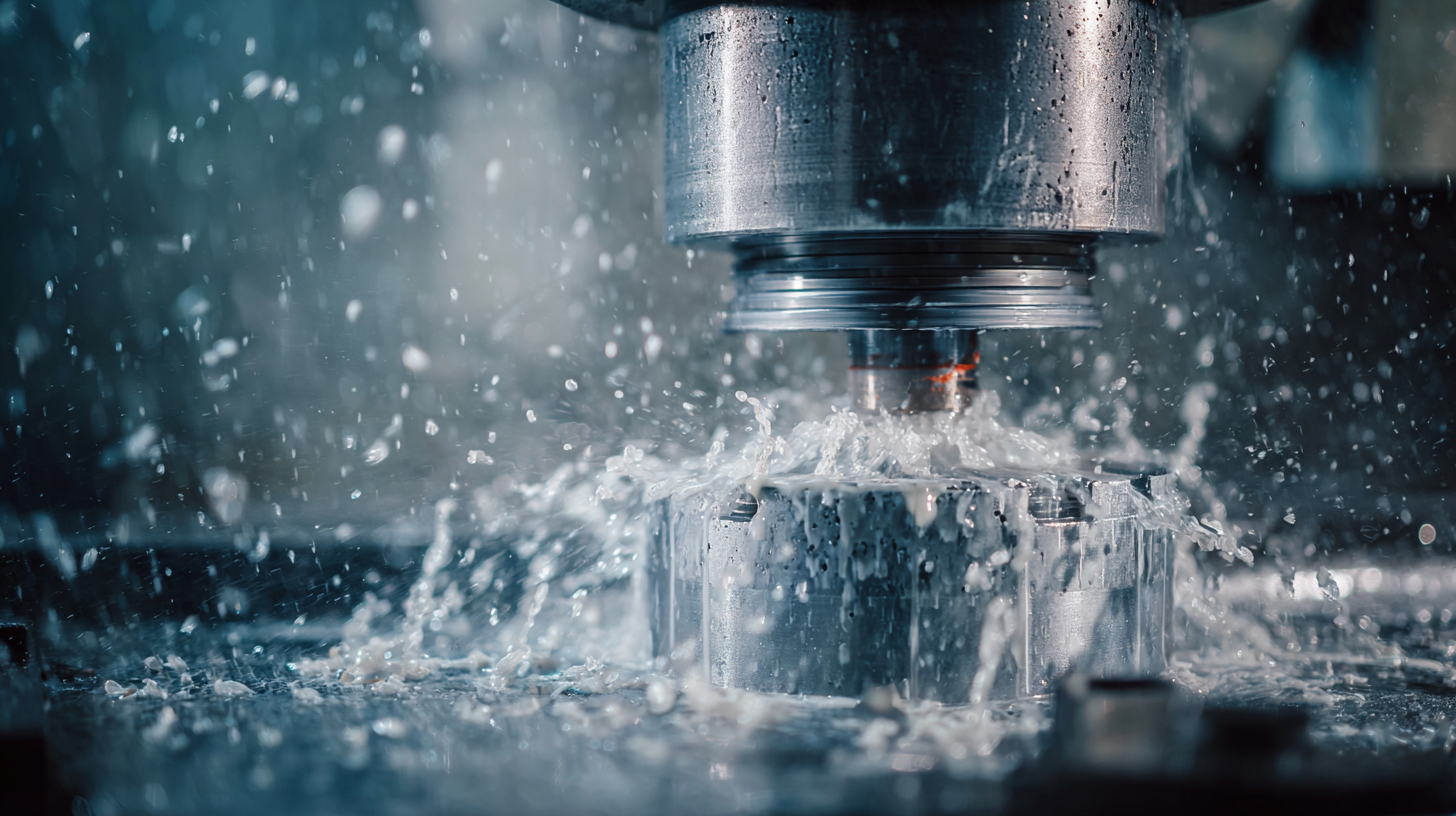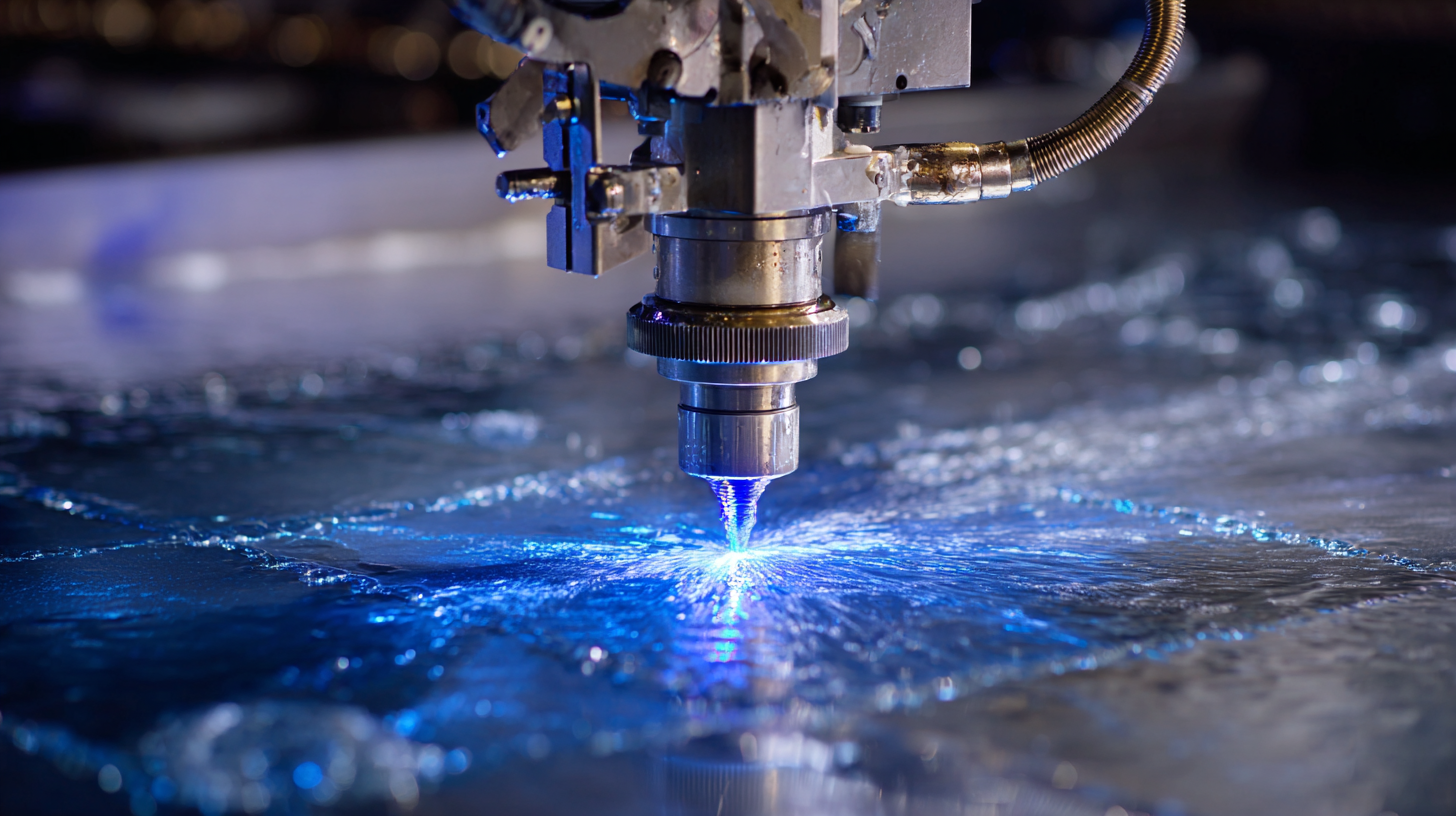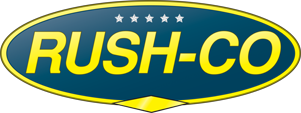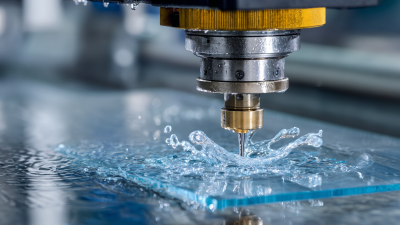The Future of Cutting Technologies Exploring the Benefits of Water Jet Abrasive Systems
The cutting technology landscape is rapidly evolving, with water jet abrasive systems emerging as a frontrunner in precision and efficiency. According to a report by Market Research Future, the global water jet cutting machine market is projected to reach $613 million by 2025, driven by the growing demand in industries such as aerospace, automotive, and metal fabrication. Water jet abrasive technology boasts several advantages, including minimal material wastage, the ability to cut complex shapes without heat-affected zones, and versatility in handling various materials, from metals to ceramics. These systems not only improve operational efficiency but also contribute to a more sustainable manufacturing approach by reducing energy consumption and production waste. As industries seek to enhance productivity while adhering to environmental standards, the adoption of water jet abrasive systems is expected to play a significant role in shaping the future of cutting technologies.

Benefits of Water Jet Abrasive Systems in Precision Cutting
Water jet abrasive systems have emerged as a leading technology in precision cutting, offering a myriad of benefits across various industries. One of the primary advantages is their ability to cut through a diverse range of materials, including metals, glass, stone, and composites, with remarkable precision. According to a report by the International Journal of Advanced Manufacturing Technology, water jet systems can achieve tolerances as tight as ±0.005 inches, making them ideal for applications where accuracy is paramount.
In addition to precision, water jet cutting is renowned for its versatility and eco-friendliness. Unlike traditional cutting methods, which often generate significant waste and emissions, water jet technology produces minimal scrap and does not introduce heat into the material being cut. This results in cleaner edges and avoids warping associated with thermal cutting methods. Data from the WaterJet Technology Association indicates that using water jet systems can reduce material waste by up to 50%, making it an environmentally sustainable choice for manufacturers.
Furthermore, the operational efficiency of water jet abrasive systems is noteworthy, as they can run continuously and reduce production time. A recent analysis by Technavio found that the global water jet cutting machine market is expected to grow by over 6% annually through 2025, highlighting the increasing adoption of this cutting technology across various sectors. This trend reinforces the position of water jet systems as a crucial player in the future of precision cutting technology.
The Future of Cutting Technologies: Exploring the Benefits of Water Jet Abrasive Systems
| Aspect | Description |
|---|---|
| Precision | Water jet abrasive systems provide high precision cutting with minimal kerf width. |
| Material Versatility | Can cut various materials including metals, glass, ceramics, and composites without altering material properties. |
| Eco-friendliness | Produces minimal waste and does not use harmful chemicals in the cutting process. |
| Heat Affected Zone | Minimal heat affected zone compared to traditional cutting methods, reducing the risk of thermal distortion. |
| Speed and Efficiency | High cutting speeds that improve workflow and reduce overall processing time. |
| Safety | Water jet cutting reduces risks associated with overheating and fire hazards. |
| Cost Efficiency | Lower operational costs due to reduced material waste and energy efficiency. |
Environmental Advantages of Water Jet Cutting Technology
Water jet cutting technology has emerged as a highly effective method in industrial applications, offering notable environmental advantages. One of the primary benefits is its ability to cut materials without generating hazardous waste. According to a report by the International Water Jet Cutting Association (IWJCA), water jet systems can reduce scrap waste by up to 85% compared to traditional cutting methods, minimizing unnecessary material disposal and promoting sustainability.
Furthermore, water jet cutting operates without the need for additional chemicals or heat, which significantly decreases air emissions. A study conducted by the Environmental Protection Agency (EPA) highlights that water jet technology can help reduce volatile organic compounds (VOCs) emissions by as much as 30% in manufacturing processes. This adherence to environmental standards not only fosters a cleaner production environment but also aligns with global shifts towards more sustainable industrial practices. As businesses increasingly prioritize eco-friendly operations, water jet abrasive systems stand out as a forward-thinking solution, benefiting both the industry and the planet.
The Environmental Advantages of Water Jet Cutting Technology
Cost-Effectiveness of Water Jet Systems in Industrial Applications
The cost-effectiveness of water jet systems in industrial applications has become increasingly significant in today's manufacturing landscape.
With their ability to cut through various materials without introducing heat, water jet abrasive systems minimize waste and energy consumption.
This characteristic not only helps maintain the integrity of materials but also reduces the overall operational costs. In the context of rising energy prices and the push for sustainable manufacturing practices,
industries are now looking toward solutions that offer both efficiency and environmental benefits.
Moreover, the expanding water jet weaving machine market, projected to grow significantly in the coming years, underscores the growing demand for advanced cutting technologies.
As industries transition to these innovative systems, they not only enhance productivity but also contribute to a more sustainable and cost-effective manufacturing environment.
The ability to tailor operations and materials used in water jet cutting further emphasizes its role as a key player in the quest for economic and environmental viability in industrial processing.
Innovations and Future Trends in Water Jet Cutting Technology
Water jet cutting technology has evolved significantly, incorporating advanced innovations that enhance efficiency and precision. One of the most notable trends is the integration of automation and robotics into water jet systems, allowing for greater accuracy and reducing labor costs. Automated water jet cutting not only streamlines production but also minimizes human error, ensuring that complex designs are executed with meticulous detail. Additionally, the development of software tools that optimize cutting paths has further improved the speed and quality of water jet cutting processes.

Another exciting trend is the enhancement of water jet capabilities through the use of advanced abrasive materials. Innovations in garnet and other abrasives have increased cutting speeds and improved edge quality, making it possible to work with a wider range of materials, including composites and metals. Furthermore, the implementation of energy-efficient systems and water recycling technologies is paving the way for more sustainable practices within the industry. These advancements are crucial for companies looking to reduce their environmental footprint while maintaining high standards of performance in water jet cutting applications.
Comparison of Water Jet Cutting with Traditional Cutting Methods
Water jet cutting technology has emerged as a significant alternative to traditional cutting methods, such as laser cutting and mechanical sawing. One major advantage of water jet abrasive systems is their versatility. They can cut through a wide variety of materials, including metals, glass, and ceramics, without altering the material's structural integrity. Unlike laser cutting, which can generate heat and potentially warp materials, water jet cutting operates at ambient temperatures. This non-thermal process results in cleaner edges and reduces the need for secondary finishing processes.

Moreover, water jet cutting is known for its efficiency and precision. Traditional cutting methods often produce waste and require extensive setup times. In contrast, water jet systems can achieve intricate designs with minimal material waste. Additionally, they significantly reduce the time required for setup and programming, which is particularly beneficial for both prototyping and high-volume production runs. As industries continue to seek faster and more sustainable manufacturing solutions, water jet cutting stands out as a highly effective alternative to conventional methods.


